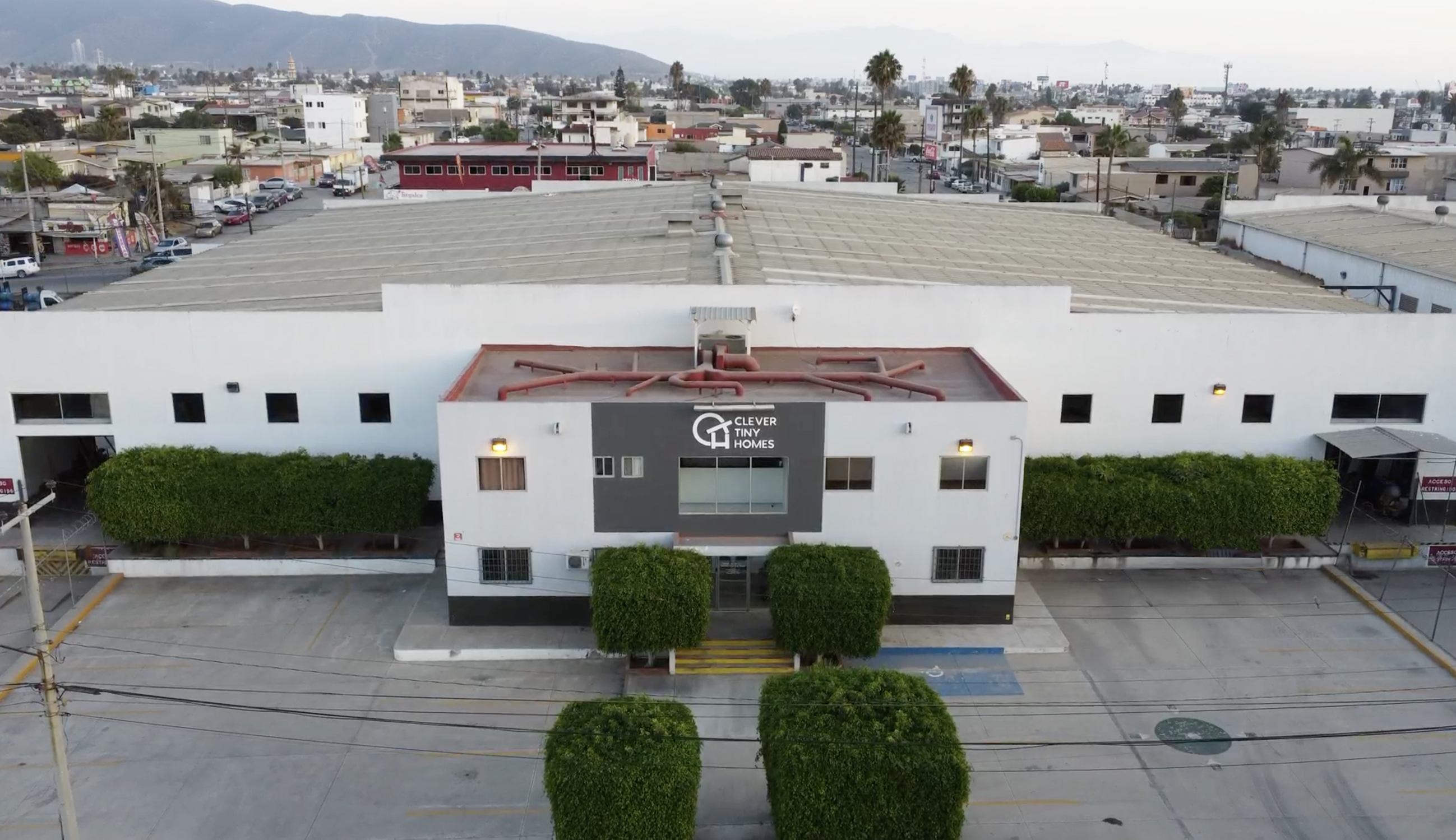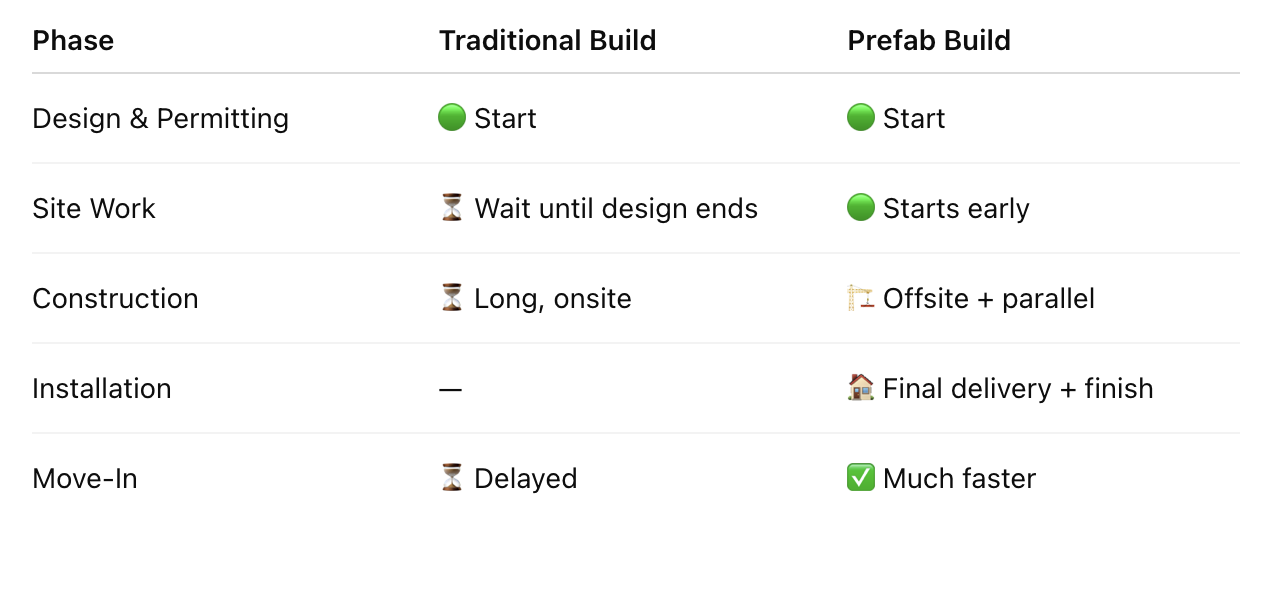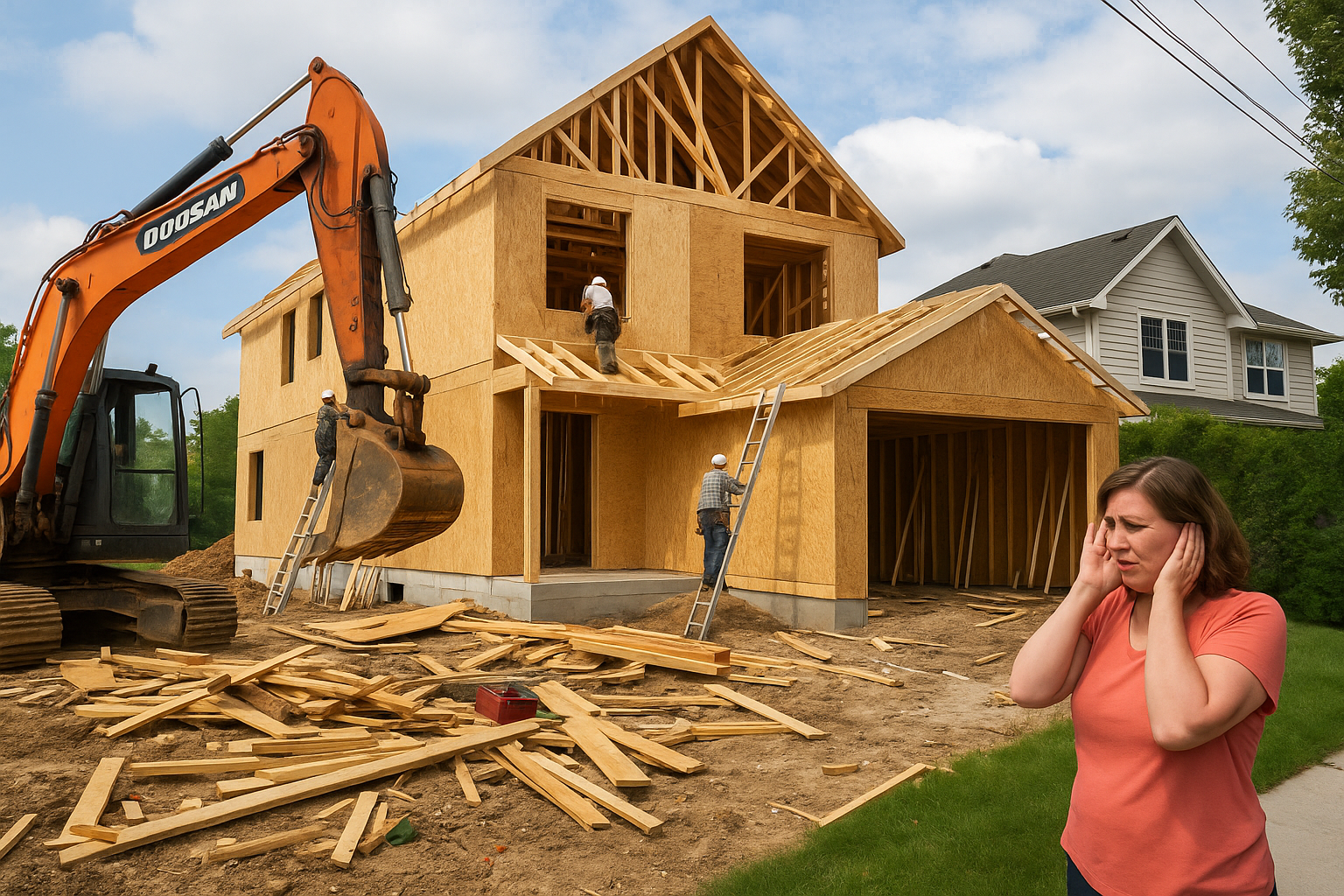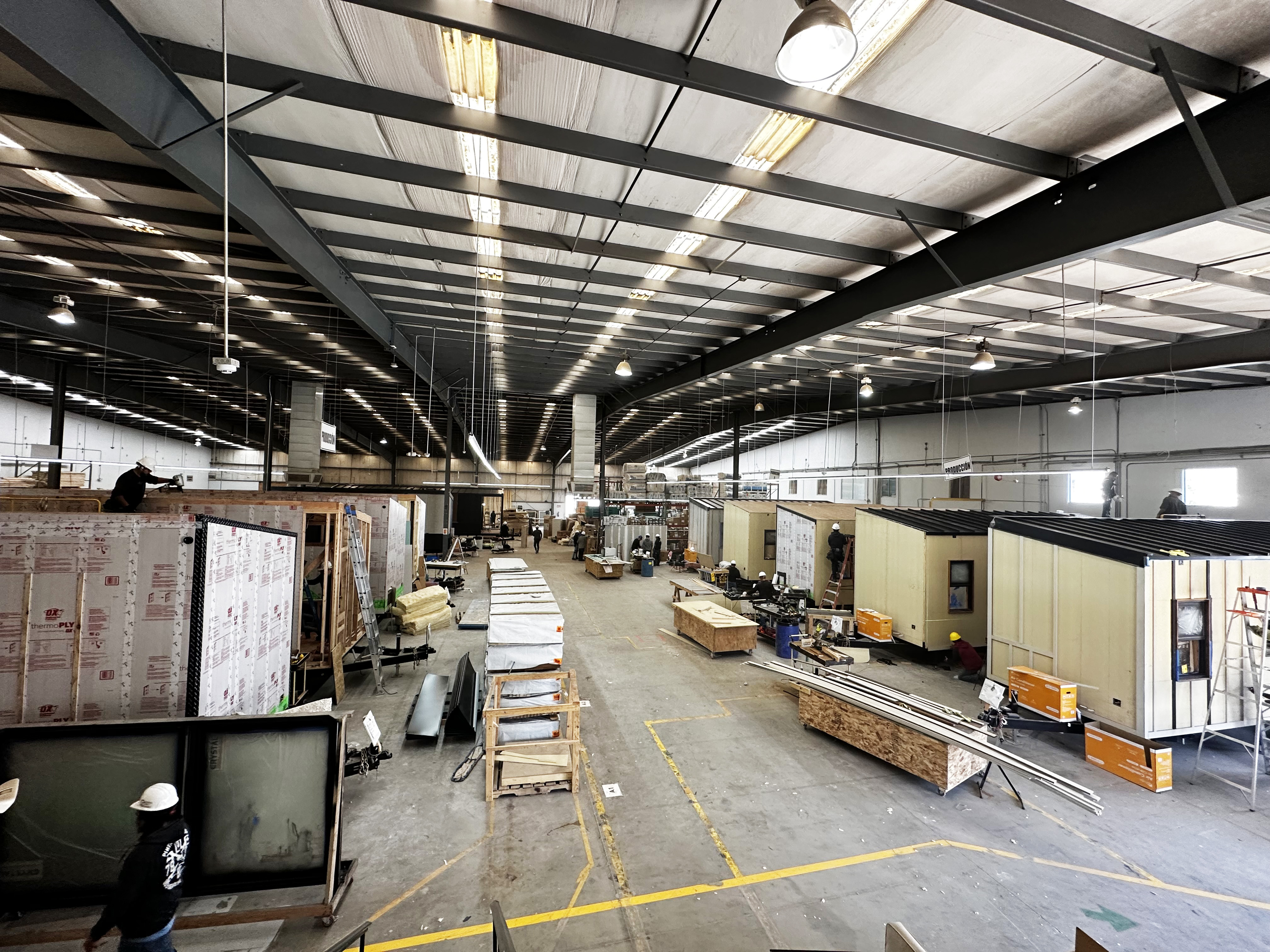TL;DR
- ✅ Prefab builds are faster because construction and site prep happen in parallel
- ✅ Less site disruption means fewer delays and neighbor complaints
- ✅ Same quality, more efficient timeline with the potential to move in months sooner
- 🧠 At Clever, we use prefab methods to deliver high-quality homes, efficiently built offsite

What Is a Prefab Build?
A prefab (or prefabricated) build means your home is constructed in a controlled factory setting, then delivered and installed on-site.


Unlike a traditional build, which happens entirely on your lot (with all the delays and mess that come with it), prefab construction happens offsite while the site is being prepped—drastically shortening your move-in timeline.
How Does a Traditional Build Work?
With a traditional build:
- You finish design and permitting first
- Then you begin onsite construction, often lasting months
- Only after construction wraps can you open or move in
Each phase is sequential. That means long gaps between steps, weather-related delays, and expensive site labor that adds up quickly.
How Is a Prefab Build Different?
Prefab flips the script.
Here’s how:

Why Prefab Builds Save Time (and Stress)
The biggest win is parallel processing.
While your land is being graded and utilities installed, your home is already taking shape in the factory.
By the time the foundation is ready, your home is nearly done.
That overlapping timeline can shave months off the total project.
Is Prefab Lower Quality? Not Anymore.
Old prefab stereotypes don’t apply here.


- Clever homes are built to IRC residential standards
- Factory precision = tighter seams, fewer mistakes
- Quality Control is consistent, not weather-dependent
- Same materials. Same code. Faster result.
Fewer Delays, Fewer Headaches

- No waiting on a framing crew in bad weather
- No months of loud construction next to neighbors
- No unpredictable subcontractor schedules
With prefab, you get less disruption and more control, especially important for short-term rental builds or planned move-in dates.
Why Clever Uses a Prefab Approach


We’re not just building tiny homes. We’re building a better process.
That’s why we:
- Build in a factory to control quality and reduce waste
- Standardize core models to streamline approvals and installs
- Work in parallel to get you moved in sooner
Because smart homes deserve a smart process.
Curious About the Process?
Explore:
Or book a consultation to talk to our team.
